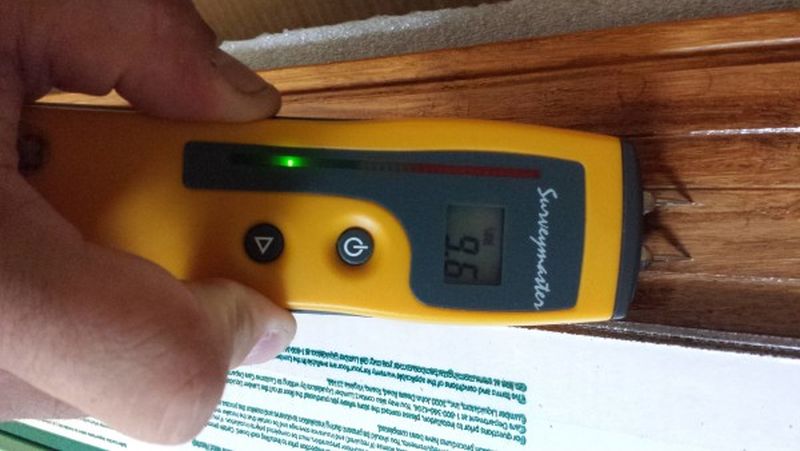
A crucial thing when laying wooden floors is that you need to know the moisture content of the subfloor on which you will install your new floor. Moreover, it is also essential to know the moisture content of the wood flooring which you’re going to lay. You need to precisely measure moisture content, because if you choose to ignore this aspect, you take a serious risk and may end up disappointed with the final result.
Remember that wooden floor moisture tests have an appropriate health warning appended – always pay attention to what it says. Usually, it states that the moisture levels tested can only be a snapshot of what the conditions are at a given moment, while they can be different at any other time. And it is by no means a guarantee of what the conditions will or won’t be in the future.
If you’re going to have the floor installed by a professional, the floor fitter should always take into account accurate moisture measurement of both the subfloor and the flooring itself. It is recommended to go for a professional floor fitter who has the skills and expertise in this field as well as the tools to do the job the right way and help you achieve the desired end result.
However, if you’re going to test the moisture content of your wooden floor and the subfloor by yourself, do carefully think it through and be cautious when getting down to doing the job. Apart from using moisture meters, you have three commonly used methods for testing moisture content in the case of concrete subfloor.
Those include:
The Phenolphthalein Test
The Phenolphthalein Test involves drilling holes in the concrete and inserting drops of the test solution into the holes. Colour changes in the solution indicate moisture.
The Calcium Chloride Test
This is one of the most commonly used and the oldest moisture testing methods for concrete subfloors. All you need to do is seal a small plastic dish of anhydrous calcium crystals over a sanded or scratched concrete surface for 60-72 hours. Then, you will be able to determine the moisture content of the subfloor based on the differences in weight between the crystals at the beginning and the end of the test. The results of the measurement are provided in grams per square meter.
The Polyfilm Test
This test is equally effective, but a bit less scientific. It involves taking several pieces of plastic film and placing them in key points over the concrete subfloor. Then, you need to use duct tape to seal all four sides of each piece to the subfloor. Leave them there for 24 hours and then remove them, checking for any signs of moisture on or around the polyfilm, such as darkening of the concrete or condensation. If there’s no indication of moisture, you can go on with the installation. However, if you notice something, then you will need to do some more testing or drying out prior to the installation.
We’ve went through major moisture testing methods for subfloors and as far as moisture testing of wooden floors is concerned there’s one crucial thing to remember – professional flooring suppliers suggest that a new floor should be left to acclimatise in the new environment before installation for several days.
| Mon-Fri | 8:00AM – 5:00PM |
| Saturday | 10:00AM – 4:00PM |
| Sunday | 11:00AM – 3:00PM |





.svg)
.svg)